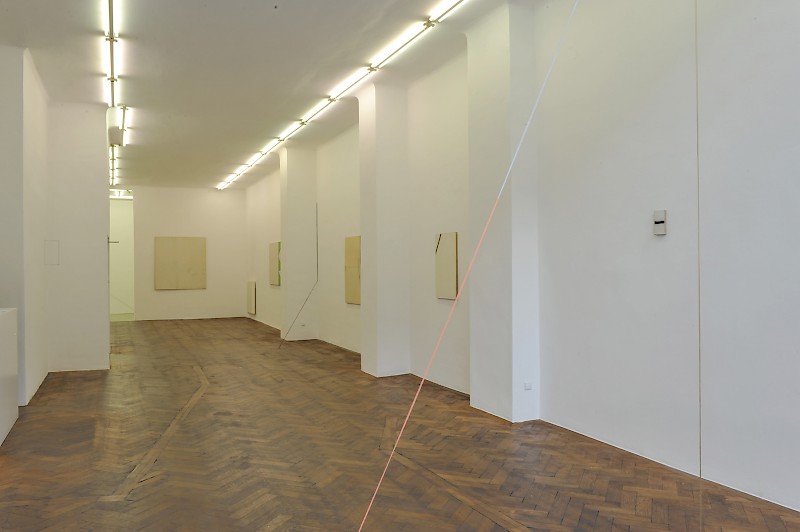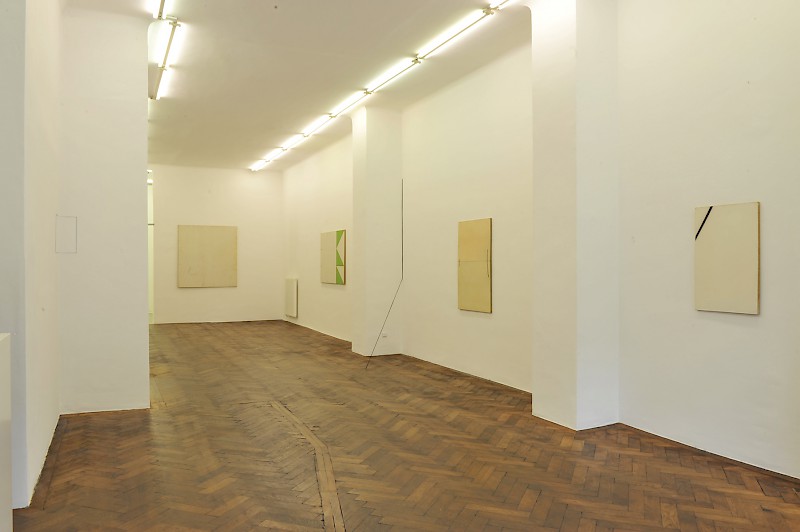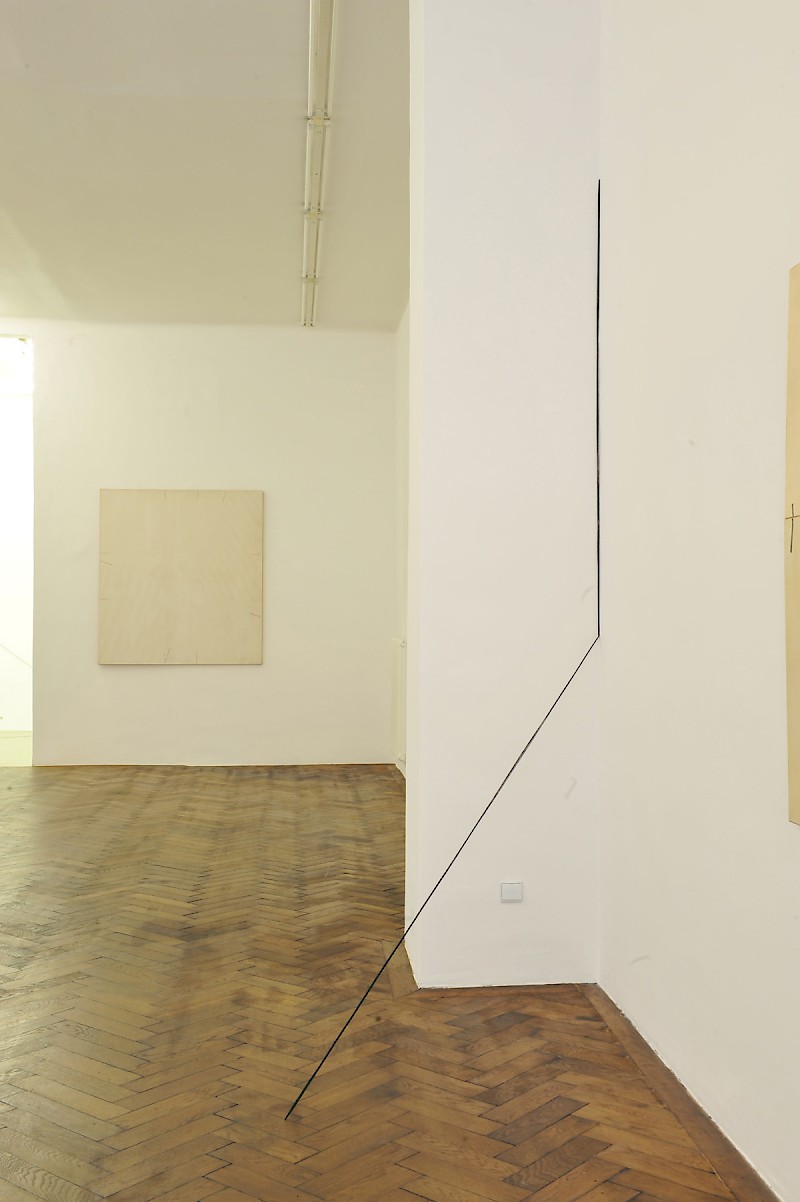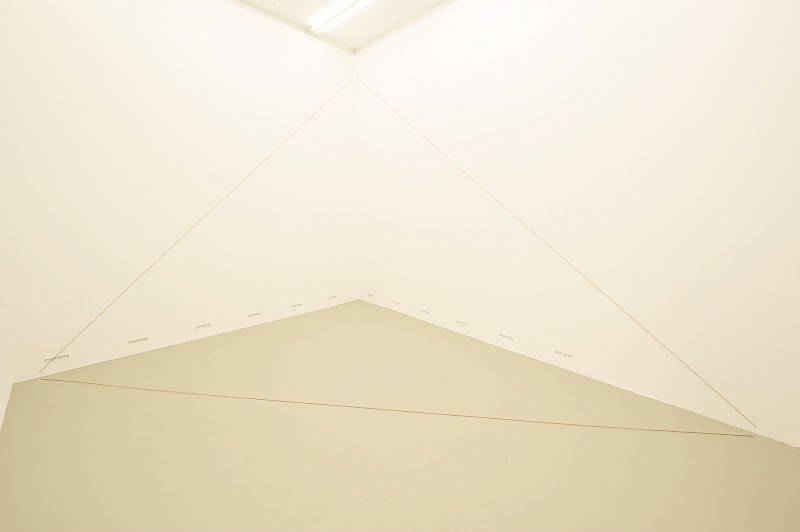Notes on color
I don´t "apply" color to a piece. And I don´t use it to create structure. I use color because there are lots of colors to be used. To only use black and white, which are colors too of course, is simply too narrow. Color changes the tone of a piece completely – just as much as a different shape, or size
Fred Sandback. Notebook of 1976
The current interest of young artists on both side of the Atlantic for the work of the French painter Martin Barré (1924-1993) is akin to the attention recently paid, after years of neglect, to the work of the American sculptor Fred Sandback (1943-2003). Though a generation apart, both artists have much in common, notably their passage through a conceptual phase against which they reacted in order to develop their superlatively minimal art, and their obdurate desire to cling to a traditional category (sculpture for Sandback, painting for Barré, including for him a return to the old concept of tableau). It might have seemed anachronistic then; it now feels prescient, after decades of puffed up installation art: one does not destroy a medium (painting, sculpture) by running away from it.
Of course, there are countless differences between their work, and it could not be otherwise, given each artist’s attachment to his own medium. Though he often conceives of them in the abstract, Sandback’s string pieces are realized in specific, concrete, architectural contexts; they depend upon them. On the contrary, Barré meticulously constructed his pictorial context (he was particularly attentive to the format of his canvases, which functioned as one of the main connective tissue between works within a single series).
But nothing better reveals their affinity of thought than Sandback’s late cut reliefs, a “circular little sideroad,” as he called them, which often look so eerily similar to Barré’s canvases of the 1970s. It is as if when he decided to tackle pictorial space, and momentarily free his work from the strictures of architectural sites, Sandback was naturally compelled to adopt the same formal strategies than Barré. The reason lies perhaps in their common skeptical attitude toward rules, systems, motivations: rather than insisting upon their use in their work, as more conceptually bent artists would have done, they let the potentiality of the line, its dynamism, dialectically undermine the tautological rigidity of the spatial grid. Barré used to say that he liked “a gesture that keeps something of its virtuality after having been traced.” Sandback’s threads are a perfect materialization of such gestures.
Yve-Alain Bois (Juli 2013)





